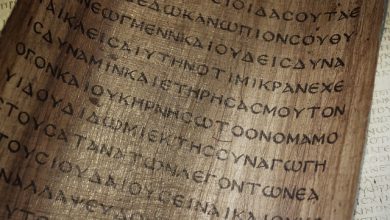The weapon of last hope from the biblical Gath

During excavations in the city of Gath, archaeologists made an exciting find: in the ruins of one of the houses, they found a bone arrowhead. According to the researchers, this weapon may have belonged to the defenders of Gath, who tried in vain to defend the city from the soldiers of King Aram Hazael.
According to archaeologists, the arrowhead has a percussion crack and was broken near the middle of the shaft, possibly due to this blow. This suggests that the arrow hit its target.
Humans have used bone points and other implements for hundreds of thousands of years. However, in this case, we are talking about the Iron Age, when arrowheads were made primarily of bronze or iron. The bone arrowheads, therefore, came as a surprise to archaeologists.
The researchers believe that such an obsolete weapon was made c. 830 BC. B.C. 830, when the army of Hazael besieged Gath, and the besieged, suffering a severe lack of everything, used what was at hand – like the Carthaginians, who, during the 3rd Punic War, wove ropes for catapults out of women’s hair. In favour of this hypothesis, back in 2006, a workshop was found in the upper city that produced bone products. (After Gath fell, it was destroyed along with the rest of the town).
Usually, such ancient workshops also made wood, ivory or stone (because such production required similar techniques and tools). However, Gathian artisans worked exclusively with bone, apparently due to the city’s lack of any other raw materials. Although it is impossible to prove it, it is possible that the bone tip mentioned above was made in this workshop.
King Hazael ruled Aram, a Levantine kingdom with its capital at Damascus. During his reign Aram became a regional superpower, conquering vast neighbouring territories. Among other things, Hazael took over much of the Northern Kingdom (Israel):
King Hazael of Syria declared war on the Israelites and their king and began to ravage the country on the other side of the Jordan, namely, the regions of the tribes of Reuben, Gad and Manasseh lying east of him, as well as the land of Gilead and Batanaea, putting everything to fire and plunder and allowing himself various violence against all who fell into his hands.
Then it was the turn of Judah: “Then Hazael, king of Aramaic, rose and went to war against Gath, and captured it”.The results of archaeological excavations confirm the biblical evidence. Archaeologists have found a layer of destruction covering almost the entire city and dating back to the time of the Aramean invasion. Impressive siege trenches and several towers found during excavations around Gath belong to the same time.
Having occupied Gath, Hazael “turned his eyes to Jerusalem,” the capital of Judah. Jerusalem escaped the fate of Gath, not because of the bravery of the Jewish soldiers, but because Jehoash, king of Judah, was able to redeem himself with the king’s treasure:
But Jehoash, king of Judah, took all that was dedicated, which Jehoshaphat, and Ahaziah and Jehoram, his fathers, the kings of Judah, had dedicated, and all that he had committed, and all that gold which was found in the treasuries of the house of Heshbon and the king’s house,-and he sent to Hazael, king of Aramaic; and he withdrew from Jerusalem.
A few decades after the Aramean invasion, Gath was briefly inhabited by people from Judea. However, in the eighth century B.C., the city was again destroyed, this time by the Assyrians.
The city of Gath is known primarily as the birthplace of the hero Goliath, who fell in battle with David:
And out of the camps of the Philistines came a one-armed man named Goliath, of Gath; he was six cubits and a foot in height. And his helmet was of brass upon his head, and he wore a chain mail, and the weight of the chain mail was five thousand shekels of brass. And his shields of brass upon his feet, and his dart of brass upon his shoulders. And the shaft of his spear is as a weaver’s warp, and the blade of his spear is six hundred shekels of iron. And the shield-bearer went before him.
It was one of the most strong cities in Philistia. According to the Bible, David conquered Gath but was not included in the kingdom until the time of Shlomo, remaining until then a vassal principality. After the dissolution of the single empire, Gath fell to Judah and was greatly strengthened by King Rehoboam.




